5G: What, when and how
The Express Tribune takes a look at what the next generation technology means for the world and Pakistan
The buzz around 5G has been building up for quite some time now.
With speeds a hundred times faster than those offered by existing 4G networks, tech observers around the world have been hyping up the next generation technology as nothing less than a revolution.
However, moving on to 5G will not be as easy as it was to shift to 4G from 3G. In fact, as things stand, it may takes years if not a decade for most countries to be ready to make the jump.
As we anxiously await the next tech revolution promised by 5G, it would do well to look into what challenges it currently poses and what ultimately makes the upgrade worth the wait.
More than just fast internet

A Reuters representational image
Looking back at the differences between its predecessors, it is easy to mistake 5G for nothing more than a faster and smoother internet connection. Seen that way, one may wonder what the big deal even is.
After all, existing high-speed connections already provide the average internet user more bandwidth than they need. From seamlessly streaming high definition videos and movies to instantaneous communication and gaming services, from an average user’s point of view, existing networks allow just about everything.
No, domestic internet use is not all 5G aims to revolutionise. The real breakthrough the new technology promises to deliver concerns the ‘Internet of Things’, the ever-growing network of various internet-enabled machines and appliances.
By allowing billions of devices to communicate simultaneously over the internet without degrading speed and quality, 5G is expected to enable such game-changing technologies as automated transport, tele-health and remotely operated drones and robots an everyday reality. It is also expected to consume far less power than its predecessors, thus increasing the longevity of individual components it uses.
What makes it better than 4G?
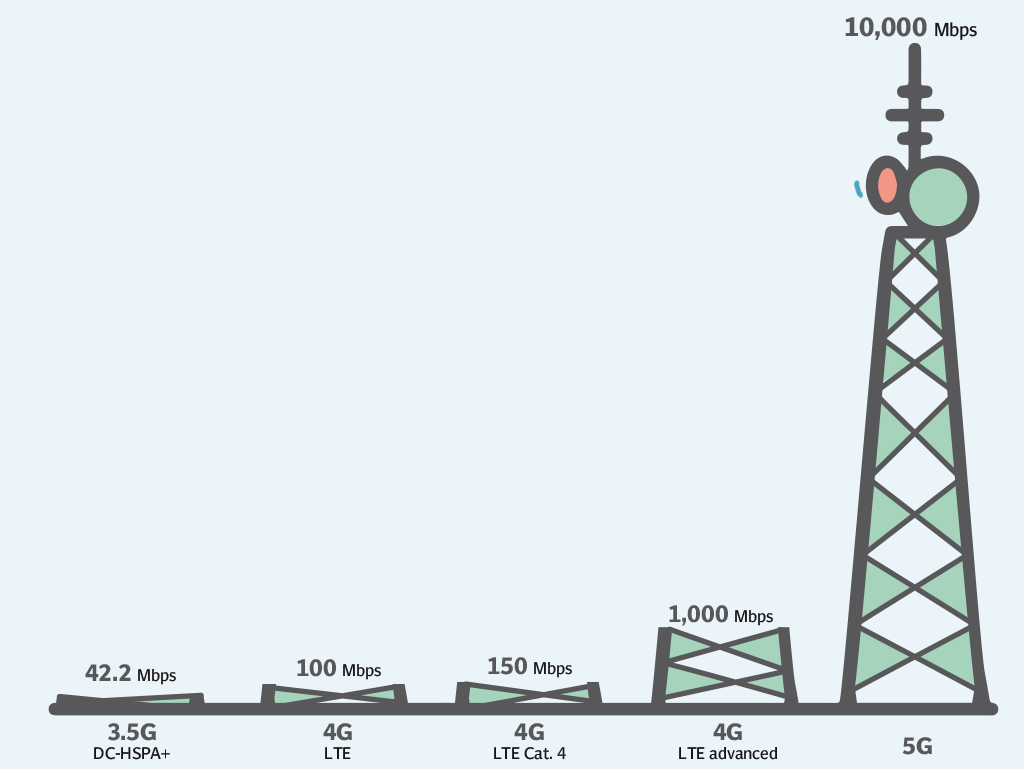
The illustration represents speed offered by each technology
The technology, like its predecessors 3G and 4G, signifies a range of wavelengths corresponding to a band of frequency.
From the inception of telecom networks all devices have been in the millimetre spectrum of 3KHz to 6GHz. While this did not used to be an issue, as we started using multiple smart devices, from cell phones and smartwatches to internet-enabled appliances and automated transport, the frequency bands we use became increasingly congested. In fact, the current stipulated frequency band is predicted to run out of space very soon, meaning no device will get the bandwidth it needs to function properly.
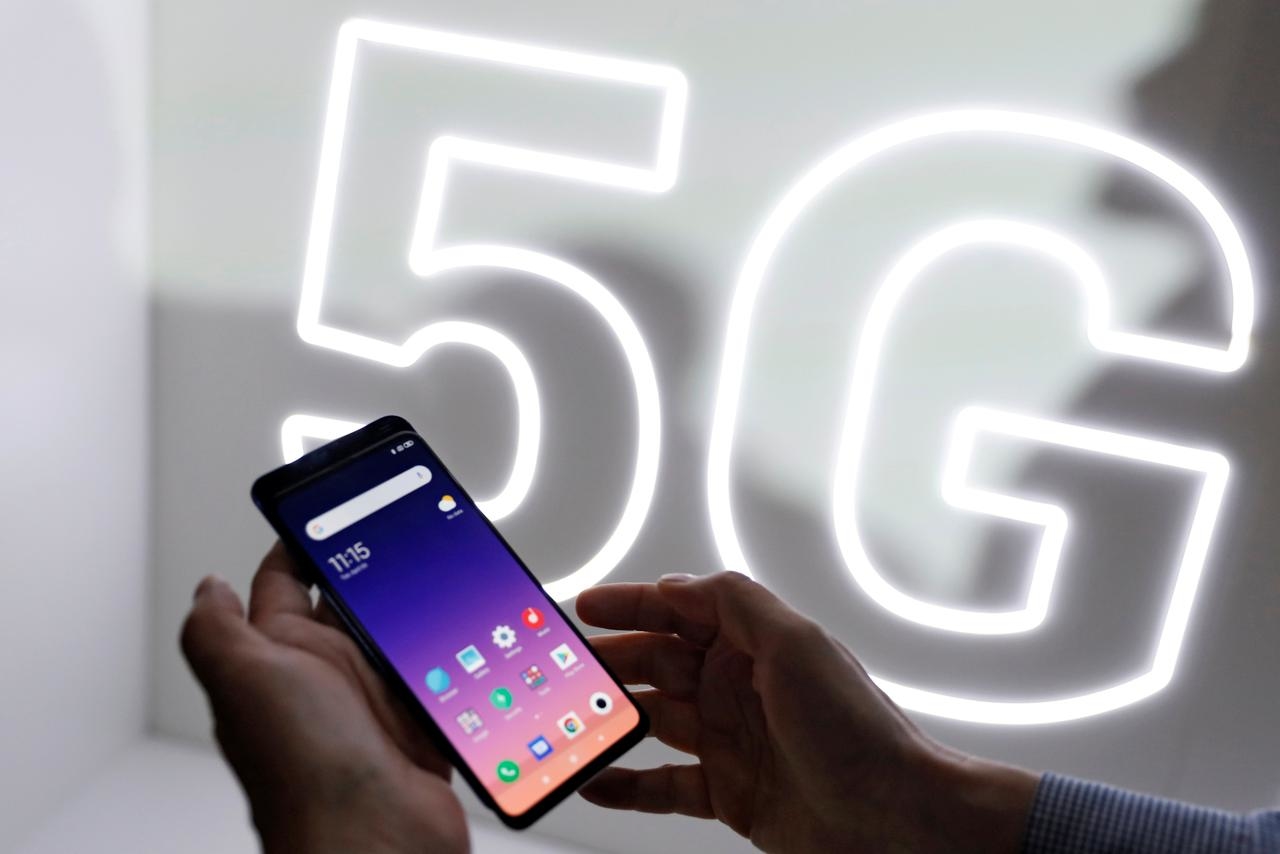
A Reuters file photo
5G opens up the millimetre spectrum from 6GHz to up to 300GHz, offering much more bandwidth. Though 5G will not use the entire bandwidth from the get go, it will allow more room for new devices to be added. The average user will initially be able to use between 24GHz to 40GHz while the bandwidth between 40GHz and 100GHz will be allocated for things like automated transport and industries, and tele-health services like remote surgeries, all of which require uninterrupted high-speed internet.
Massive and Multi-User Multiple Input and Multiple Output (MIMO) technologies allow 5G to be used in high density areas using large numbers of individually-controlled antennas which may or may not be embedded with radio transceiver components. The technology will provide connectivity to over one million devices per three square kilometres making it suitable for deployment in stadiums, city hubs, concerts and other crowded public spaces.
Although Massive MIMO’s effectiveness is ordinarily degraded by intercepting waves emanating from a huge number of devices relying on it, 5G technology uses ‘beamforming’ to mitigate it. As the name suggests, beamforming is the process of directing radio waves to a particular target.

On the 5G hype train already
As of now, only five countries are making use of 5G technology. China, US, South Korea, UK and Germany have multiple companies offering both 5G services and 5G compatible devices to consumers.
Two more, Switzerland and Finland, are set to follow suit very soon. India, which is considered among the world’s largest telecom markets, is considering switching to the technology either next year or in 2022.
South Korea was the first 5G adopter, rolling out the technology nationwide in April last year. Following its lead, China launched 5G commercial services in 50 cities, including Beijing, Shanghai, Guangzhou and Shenzhen.
In the US, the roll out of 5G has been considerably limited, with services available only in a handful of cities. Deployment is also in its infancy in Germany, where four mobile phone carriers bid for 5G licenses and paid a total of $7.4 billion to the federal government for network construction in 2019.
The UK is launching 5G in a very staggered manner, as some providers had services available as early as May 2019 while others still waiting to roll theirs out. The limited services are not available nationwide either and even where they are available, only a few have switched to compatible devices.
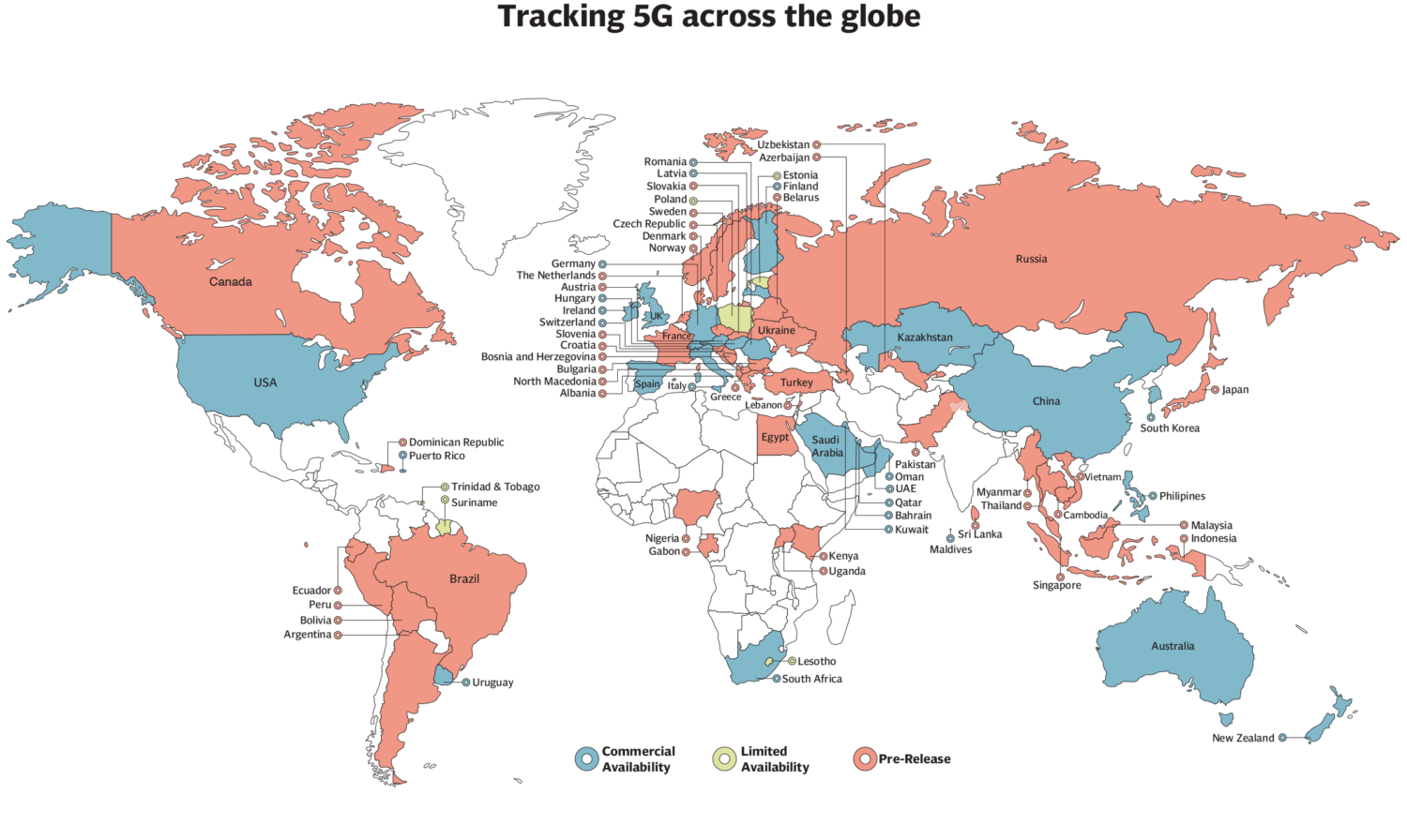
The Huawei controversy
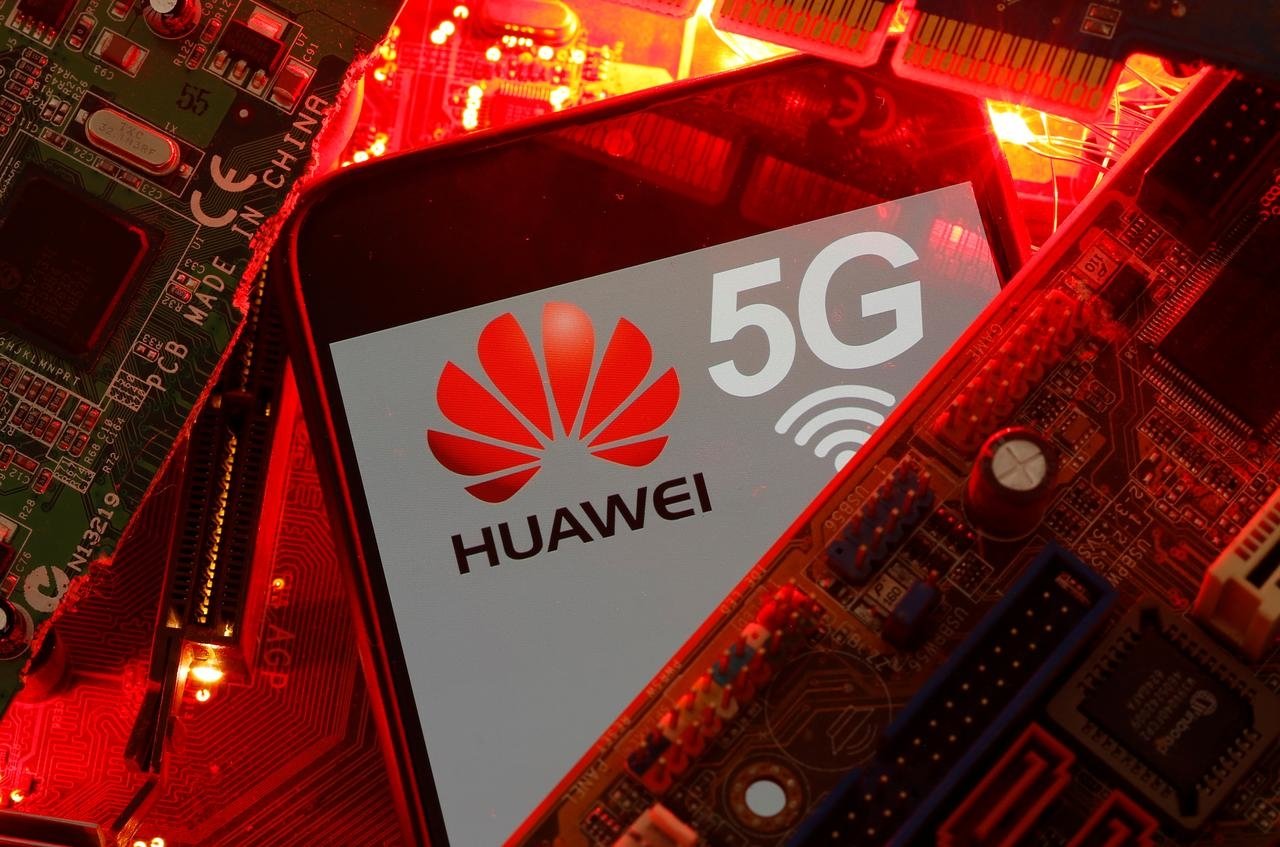
A Reuters file photo
Last November, the US telecom regulator kicked up a row with China when they declared 5G technology introduced by Chinese tech giants Huawei and ZTE a threat to their national security. The Federal Communications Commission (FCC) even went as far as proposing to force US customers to replace equipment previously purchased from the firms.
Arguing that the firm is too close to the Chinese Communist Party and Chinese intelligence services, the US had previously warned its allies that any use of Huawei would lead to a review of intelligence sharing. It then went on to encourage them to ban Huawei from bidding for 5G contracts.
Despite the intense lobbying effort by Donald Trump’s administration, both the UK and Germany allowed Huawei to enter their markets with 5G. German Chancellor Angela Merkel, in a recent interview, said that “diversification was crucial to ensuring a country's security in the roll-out of 5G mobile technology and shunning one supplier altogether risks being counterproductive”.
German operators are all Huawei customers and have warned that banning the Chinese vendor would add years of delays and billions of dollars in costs to the launch of 5G networks.
Likewise, British officials have proposed granting Huawei a limited role in the UK's future 5G network. The officials proposed barring Huawei from the sensitive, data-heavy ‘core’ part of the network and restricted government systems, closely mirroring a provisional decision made last year under former prime minister Theresa May.
Across the EU, no government has yet imposed an outright ban on Huawei. Attitudes range from welcoming to sceptical, reflecting diverging risk perceptions and attitudes towards Washington and Beijing.
Implications for Pakistan

A Reuters file photo
Speaking to The Express Tribune, information and communication technologies (ICT) expert Noman Said insisted even if Pakistan does not want to be part of the 5G revolution it will have to be part of it.
“5G technology can help Pakistan create better economic opportunities and will help in cost saving only if it is used wisely,” he said, noting that the few countries that have already rolled out the service should be good case studies.
“To bring 5G to Pakistan, authorities will have to closely follow states already using it to have a roadmap. Any implementation would need to be phase-wise,” he underscored. “It is not going to be an easy task. Anything that we implement will have to be measured so that the consumer gets the most benefit out of it.”
On the upside, Said foresaw 5G accelerating innovation and providing valuable application in safe city projects and smart homes. “It will be a step in the right direction for a block chain and technological change.”
ICT expert Parvez Iftikhar, on the other hand, cautioned that 5G infrastructure would not come cheap and widespread proliferation could take years. “While 5G can be made available in the next one to two years, rolling it out on large scale will take around four to five,” he said.
“To begin with, 5G gadgets may become available, but cheaper options would not hit the market for a while. Then there is the fact that most networks in Pakistan do not even provide 4G right now.” As such, Iftikhar argued that 5G would not have a huge impact in the country as soon as it is introduced.

JAZZ team at the launch of 5g in Pakistan
"Over 90 million Pakistanis, more than half of the country's mobile users, still do not have access to internet in Pakistan," said Jazz CEO Aamir Ibrahim. "This is not because the internet is expensive, but because smartphones are still not in their buying reach. Our obligation is to first get them this access before aiming ahead."
He pointed out that Pakistan ranks second or third in the world with the cheapest available internet but the prices of handsets are the highest here.
Rebuffing the criticism over mobile networks for not being able to provide the ‘real 4G experience’ to its users, Ibrahim said the speeds they offered were restricted by their licenses. “In other parts of the world, 4G speed ranges between 4mbps to 100mbps, but here, the regulator has allowed us to provide only 2mbps,” he said. “The telecom regulator must improve quality standards and provide some relief to operators since bring 4G here at par with the rest of world would impact current internet rates.”
He also pointed out that before Pakistan can move to 5G, a business case needs to made for it. “The 100MHz band that 5G requires is neither free nor available in Pakistan. This is something for the government and PTA to look in.”
To prepare a 5G roadmap, the IT ministry and Pakistan Telecommunication Authority (PTA) have already started some consultation and have constituted a committee to get input from stakeholders, he said.
On the clamour about security risks, ICT expert Iftikhar claimed it does not raise much concern in Islamabad. “For Pakistan, China-based or US-based, the security threat from these technologies is the same,” he said. He saw US concerns as politically motivated since it was the first time China had beat it to a new technology.
Potential health risks
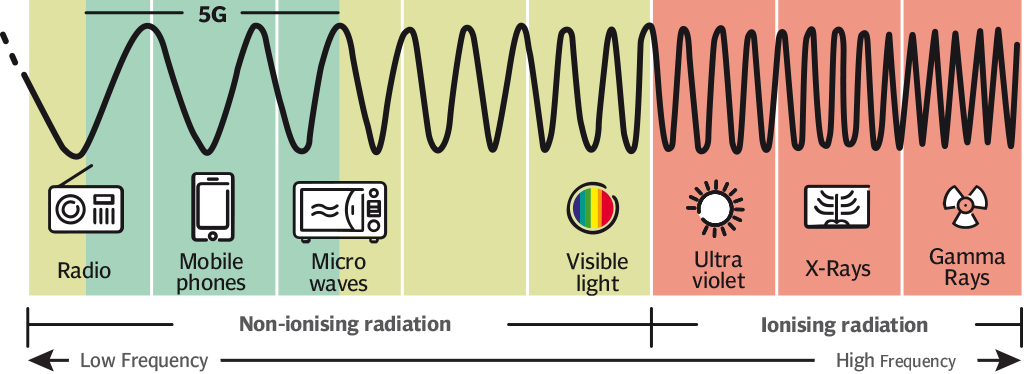
There is a large debate over the health risks that 5G technology poses owing to the use of microwave frequency which is widely believed to be harmful. Also, since 5G waves cannot travel long distances, it will require a huge number of transmitting antennas.
However, research suggests much of these fears are unfounded. A World Health Report from 2014, for instance, found no adverse health effects linked to cellphone use. The International Commission on Non-Ionising Radiation Protection, an organisation formally recognised by the WHO, has also concluded that exposure to the frequency below the thermal threshold is unlikely to cause adverse health effects.
Responding to a petition in last March, the UK government too said its independent inquiry had found devices producing exposures within current guidelines do not pose a risk to public health.